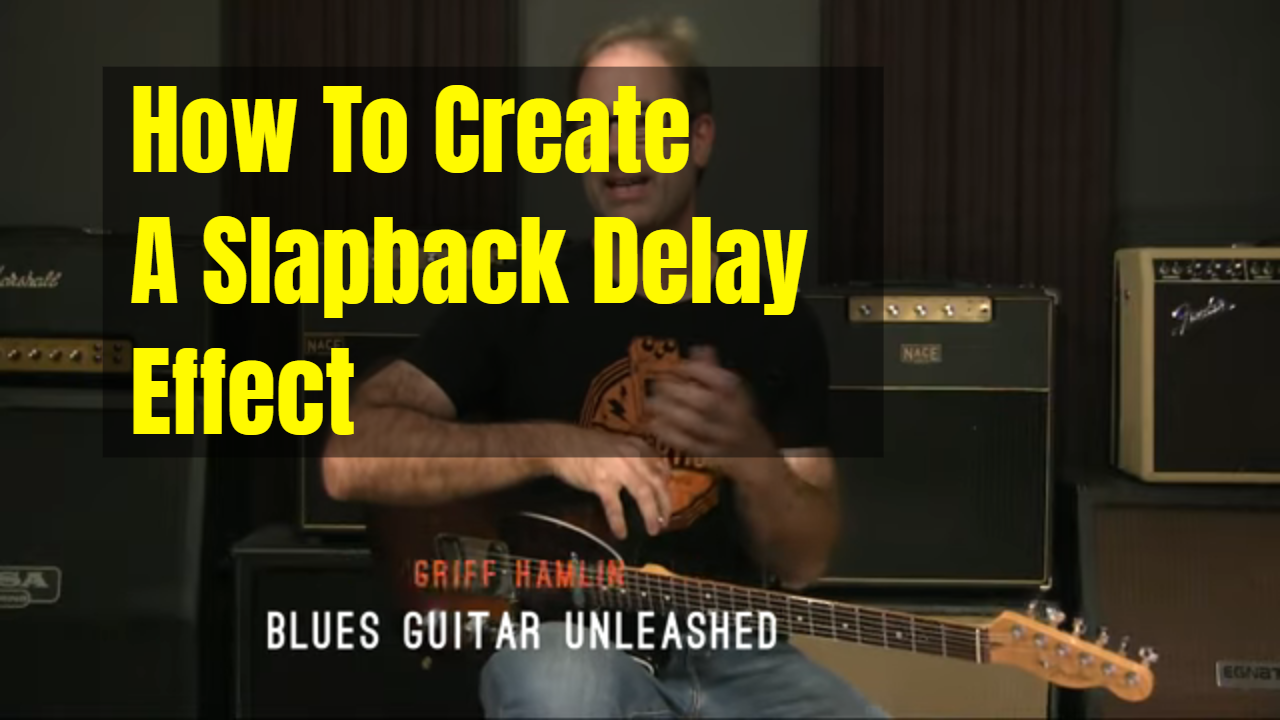Many folks have asked what “slapback” is and how you get it…
It’s a pretty simple trick with a delay pedal of just about any type, and it can be a great way to add some girth to your notes.
Great players like Robben Ford, Matt Schofield, and Brian Setzer have used a slapback for most of their careers and you almost wouldn’t recognize their tone without this little bit of sugar on the notes.
Here’s how to set your delay pedal and how to make the sound.

22 replies to "How To Create Slapback Delay"
I have gotten so used to delay on both my acoustic and electric playing , I cant plat without them any more. LOL
And where in the signal chain? Before the reverb from what I’m gathering, but both at the end, just before the amp correct? Thank You!
It’s tricky chasing tone. I use a Mad Professor “Deep Blue Delay” slap-back pedal and run it through a REVV G20 amp head connected to a Peavy 2 X 10 cabinet.
The Revv G20 tone is driven by software, IRs (impulse response) profiles, that mimic various amp cabinets and microphone placements. The software is supplied by Two Notes. Dial up a Fender Blues Deluxe or Twin, a Marshall, or whatever your tone needs.
Getting the tone right takes lots of thought (and experimentation) with the signal chain from the pedalboard to the REVV amp head.
Sounds like a formula for some ZZ Top sounds. It got my interest
I recently purchased a Spark Amp, which is a digital amp and simulates a variety of amps an d effects pedals including a variety of delay pedals. I haven’t experimented with it a lot yet, but now I will. I agree with Griff in not really liking a lot of delay, but the sound he got with just a little sounded great (or fat, as he would say). Thanks Griff.
What’s the difference between slapback and reverb?
My Boss ME70, Has slap back on the delay effects pedal. has the Mli. seconds and mix. with other delay effects.
Reverb , is the like an empty closed room sound, or hall effect.
I’ve got an ME80 which does not have a separate Slapback Delay.
For a slapback delay, here are my staring settings:
Delay:
Select 1 — 99 ms
Time:
90 ms or above
Feedback:
Low – 1 repeat
Effect Level:
80 and higher …..
So then what is “chorus” ?
Ditto on the comments above regarding lesson on pedals. And what position to arrange them on the pedal board. Thanks
Alot of Videos on YouTube. I have my reverb after my delay.
This is cool and very useful. Hope Griff is getting a commission on all of the pedal sales this tutorial is going to generate. Going on line to order one now…..
Another great tutorial
Very useful. Subtle seems to be the trick.
Nice and useful. I have a multi effect pedal and cant always figure out how to set the thing for a desired effect I need. More tutorials on individual effects and setting would be great.
Hi, Griff.
Thanks a million. That was great. I think it’s a great sound and it explains why some recordings sound like they do. Now (thanks to you) I can find my own version of it.
Cool story, bro! I can use that! Thanks, buddy!
Absolutely agree with Griff. Great points as always. This adds sugar to the sound, but beware of ‘over sweetening’!! Great stuff, thanks!
Yeah cool I use a classic blackface tonal sound its kinda like this sound . Anyway Brain uses a unique amp set up and makes his Gibson sound great . It would be very dry without it . I do not use a lot of different tonal sounds call it the kiss channel keep it simple sounding unless you want to distort it . The blues does not sound right with distortion. Rock on keep it cool.
Yeah! More video on how to use effects pedals please, Griff
Thank you so much for another wonderful tutorial. Always wondered about this and just could not dial it in with my digital delay. Now I can.
Griff, that was most helpful….why not explain how you use some of the other pedal effects. We are all looking for a “sound” – your explanation might save us all time and money. Thanks